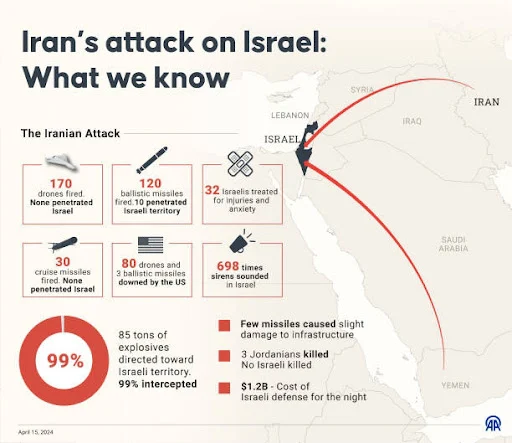A graphic released by the Pentagon shows the flight path and timeline of Operation Midnight Hammer, the U.S. operation to strike nuclear sites in Iran on Saturday, June 21, 2025.
About Us - Welcome to The GeoLens – your trusted destination for in-depth geopolitical analysis, world affairs insights, and strategic international coverage. We research and write passionately about decoding global events, international relations, and defense strategies. Our goal is to deliver accurate, timely, and unbiased analysis on the key power shifts, military conflicts, diplomatic moves, and global alliances that shape our world.
Monday, 23 June 2025
Operation Midnight Hammer: How the U.S. Decoy and actual route outwitted Iran’s Defenses in a Triple-Site Nuclear Strike
A graphic released by the Pentagon shows the flight path and timeline of Operation Midnight Hammer, the U.S. operation to strike nuclear sites in Iran on Saturday, June 21, 2025.
Sunday, 15 June 2025
The Israel-Iran Conflict: What You Need to Know About the Recent Attack
The Israel-Iran Conflict: What You Need to Know About the Recent Attack
Written by: Pratik | The GeoLens
Introduction
In April 2024, the Middle East was once again pushed to the edge when Israel launched a surprise retaliatory strike against Iran. This act was a response to a barrage of drone and missile attacks that Iran had fired into Israeli territory, marking one of the most intense escalations in decades. But what exactly happened? Why did it happen? And what could it mean for the future?
This no-nonsense guide breaks down the key facts behind the conflict, the geopolitics involved, and why the world needs to pay attention.
Background: Why Are Israel and Iran Enemies?
Israel and Iran have had hostile relations since the 1979 Islamic Revolution in Iran. Iran's leadership views Israel as an illegitimate state, while Israel sees Iran as a threat due to its support for anti-Israel groups like Hezbollah and Hamas and its pursuit of nuclear weapons.
Tensions have boiled over multiple times over the years, often through proxy wars and cyberattacks. But 2024's direct missile exchange changed the game.
The April 2024 Strike: What Really Happened?
On April 13, Iran launched over 300 drones and missiles toward Israel in a massive coordinated attack.
Israel's Iron Dome air defense system intercepted most of them, with help from allies like the US and UK.
In response, Israel conducted a targeted airstrike deep into Iran, reportedly hitting nuclear research and drone facilities.
Both sides avoided directly declaring war, but the escalation was unprecedented.
This was the first-ever direct attack from Iranian territory to Israeli territory.
Immediate Consequences
Oil prices spiked globally due to fears of war in the Middle East.
Civil aviation routes were disrupted over Iran, Iraq, and Israel.
The United Nations called for restraint, but no ceasefire agreement followed.
Iran suffered reputational damage after most of its missiles were intercepted.
Geopolitical Implications
US & Western Support for Israel: This attack reaffirmed Western alignment with Israel, increasing regional polarization.
China and Russia’s Role: Both called for peace but criticized Western intervention. Their silence on Iran’s aggression raised eyebrows.
Arab World Reaction: Mixed responses. Countries like Saudi Arabia remained cautious, trying to avoid direct involvement.
This conflict could impact everything from oil prices to global alliances.
What Could Happen Next?
Cyber warfare escalation between Israel and Iran.Increased proxy activity in Lebanon, Syria, and Gaza.Diplomatic isolation for Iran if it retaliates again.Possible US involvement if Israel is attacked further.
The situation remains fluid, and one wrong move could trigger a wider regional war.
📈 Why You Should Care
If you're preparing for a career in the armed forces or aspire to be an officer, understanding real-world conflicts like these is essential.
These events test international law, diplomacy, military preparedness, and national security policy.
India's own position on such issues affects our defense strategy and foreign policy.
💼 Final conclusion: Stay Aware, Stay Prepared
The Israel-Iran episode is more than just a headline. It’s a live case study in modern warfare, deterrence, and international diplomacy.
📅 Stay Tuned
More geo-political breakdowns coming soon.
Subscribe to Officer Wing to stay updated with global affairs and defense insights.
Contact: Contactgeolens@gmail.com
Trump announces Iran Israel ceasefire :Tactical Pause or Strategic Surrender?
Trump’s Sudden Ceasefire Between Israel and Iran: Tactical Pause or Strategic Surrender ? By Pratik Kondawale | The GeoLens – Global Affair...

-
US B-2 Bombers Strike Iran’s Nuclear Sites: What It Means for the Middle East and the World By Pratik Kondawale | The GeoLens – Global Affai...
-
Air India Dreamliner Crash in Ahmedabad: What Really Happened & What Needs to Change. Written by: Pratik | The GeoLens We ca...
-
By Pratik Kondawale | The GeoLens – Global Affairs & Insights. 22 June 2025 | 🕒 8–10 min read Washington — Senior Pentagon officials r...







